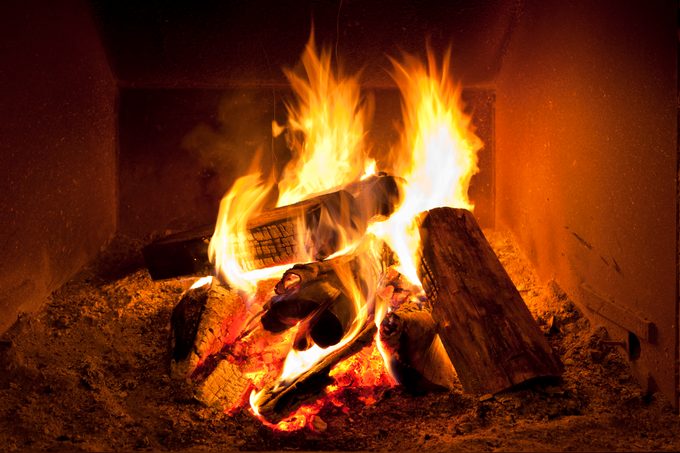How Much Firewood Will I Need This Winter?
According to the latest census data, nearly two percent of U.S. households are heated with wood via fireplaces, wood stoves or wood boilers. That amounts to more than 2.5 million homes relying on firewood or wood pellets for heating fuel.
If your home is one of these, or even if you just use an indoor or outdoor fireplace for occasional warmth and ambiance, having enough wood to get you through the winter is key. Calculating how much firewood you need to buy and store for the season will allow you to stay toasty and warm all winter long, with no interruptions while you wait for another wood delivery.
How do you know if you’ve got enough on hand? Read on to learn more about how much firewood you’ll need this season.
Start with the Average Outdoor Temperature
Depending on where you live in the U.S., the heating season generally runs from October through the end of April. The World Health Organization and the U.S. Department of Energy recommend winter thermostat settings between 64 and 68 F.
When it’s too cold outside to keep the inside of your home in that range without assistance, it’s time to light the fire. More frigid winters, of course, typically require more firewood.
Add in Usage and Other Heat Sources
Do you need enough wood to heat your whole home all winter, or just for the occasional fire in the living room hearth or backyard fire pit? There’s a big spread between those two needs. Perhaps you fall in between. Maybe your wood-burning fireplace lets you turn down your furnace for a bit, or you use space heaters in certain parts of your home.
“If you’re using your wood-burning appliance as your primary heat source, you might expect to use between three and six cords of wood in a season, depending on where you’re located,” says Russ Dimmit, director of education for the Chimney Safety Institute of America.
“If you’re only using your heating appliance for ambiance here and there, you’ll likely go through a cord or less in a season.”
Calculate Room or Home Size

Eric Carlson, executive director of the West Virginia Forestry Association, shares a simple formula for calculating wood supply for home heating. “In northern climates like Maine, two to three cords per 1,000 sq. ft. is a good rule of thumb,” he says.
So a 1,500-square foot house in chilly New England needs four to five cords of wood to get through the winter. The farther south you go, the less you need. A same-sized home in West Virginia requires 25 to 50 percent less firewood, Carlson says.
Also keep in mind smaller rooms warm up more quickly than larger ones, or open-concept living spaces. And regardless of room size, ensure that your windows are sealed for the winter so the warm air can’t escape.
Factor in Firewood Type
Firewood burns at different rates.
Hardwoods burn slower and hotter than softwoods and are far and away the better choice for interior heating with wood, says Codey Stout of Tree Triage. Softwoods like pine and cedar grow faster and season, or dry out, faster, which usually makes them less expensive than hardwoods. But for home heating, there’s no comparison between the two.
Virtually all firewood you purchase will already be seasoned, either naturally over time or via the accelerated process of kiln-drying. Kiln-dried wood lights easier, burns hotter and lasts longer than traditionally seasoned wood. But it costs about 10 to 30 percent more, though advocates say you recoup the additional cost in energy efficiency.
Beech, hickory and oak are among the many hardwoods that burn slowly and produce a considerable amount of heat. They’re great choices if home heating is your main consideration. If you’re going for atmosphere, still stick with hardwood for your indoor fires and any outdoor fires you might cook over. Softwood, while cheaper and easier to light, emits resin that can gunk up a wood stove, and it produces a lot more smoke than hardwood does.
For your backyard burning needs, a mix of soft- and hardwood works. Softwood lights easily so it’s good for kindling, and you’ll get that nice smell that comes from conifers. Just be sure to watch your sitting distance, since softwoods tend to pop and emit more sparks.
Your Final Firewood Amount
Factor in all the above points to determine the amount of firewood you’ll need, then speak to whoever you’re buying it from to verify your calculations. Here’s a general guide:
If you use firewood to heat your home:
- In a Northern or chilly Midwest climate, estimate two to three cords per 1,000 sq. ft. of home.
- In a milder climate such as the Mid-Atlantic or Southeast, estimate one to two cords per 1,000 sq. ft. of home.
If you use firewood for recreational fires or supplemental heating:
- For occasional indoor fires — say once a week or so — a half-cord of wood should be more than enough for winter.
- For outdoor fires about once a week, you may want to order a full cord, since wood burns faster in outdoor conditions.
When in doubt, if you have room to store the wood, it’s better to err on the side of ordering more firewood than you think you’ll need. Properly stored firewood can last several years. Store off the ground and neatly stacked in a dry place, covered with a tarp, and you’ll toss those excess logs on the fire next winter.
On the other hand, if you’re a casual fire-builder and you run out of wood, it shouldn’t be too terribly inconvenient to go buy a little more.
No comments